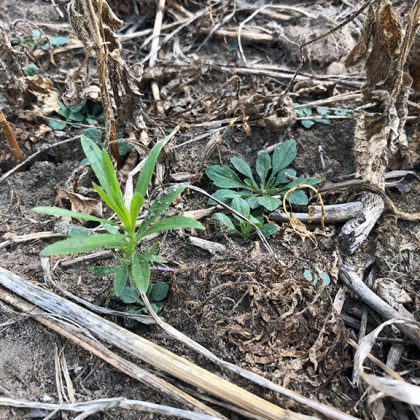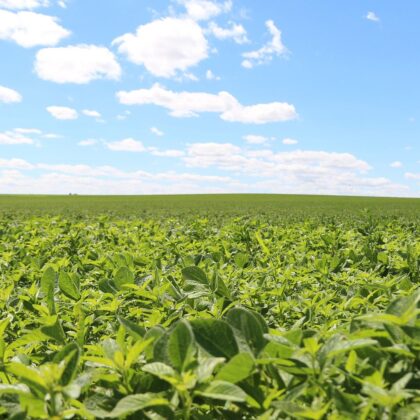Horseweed: A Persistent & Unpredictable Foe for Soybean Growers
The article “A survey evaluating the spatial and temporal distribution of horseweed (Conyza canadensis) late season in Ohio soybean fields from 2013 to 2017” is freely available online.
Horseweed is one of the most common and troublesome weeds in soybeans – able to cause significant yield losses when left uncontrolled. That’s not surprising when you consider a single horseweed plant can produce up to 200,000 feather-light seeds that can be easily spread across vast distances. To add to the misery, herbicide resistance has made horseweed increasingly difficult to control.
A recent article in the journal Weed Science shows the importance of vigilance and proactivity to protect crops. The authors summarize findings from a five-year study they conducted to assess the late-season occurrence of horseweed in 49 Ohio counties where soybeans are grown. Surveys were conducted annually to determine the frequency of horseweed sightings, the level of infestation and distribution, and any trends associated with significant clusters and movement.
Researchers noted a marked increase in infestations over the five-year period, with horseweed encountered in each county during each year of the survey. It was found in as many as 38 percent of fields overall. Unfortunately, though, the team was unable to identify any distinct pattern of distribution or movement from year to year.
What does this mean for growers? Horseweed is likely to persist as a threat to soybean yields, with few clues to predict when and where it will next emerge. That makes rigorous scouting and integrated controls a must.
Want to learn more? The article “A survey evaluating the spatial and temporal distribution of horseweed (Conyza canadensis) late season in Ohio soybean fields from 2013 to 2017” is freely available online.






